Hello everyone:
This week’s writing is shorter than usual, for reasons I explain below. Some of you may be quietly cheering… but for those who prefer more meat on the Field Guide’s bones, I’ve bulked up my selection of Anthropocene news for you. Be especially sure to check out the Times piece on the fate of U.S. groundwater, the Yale e360 piece on the ecological value of abandoned farmland and degraded forests, and the WBUR article on the cost of clear-cutting forests for solar arrays.
As always, please remember to scroll past the end of the essay to read some curated Anthropocene news.
Now on to this week’s writing:
Heather and I had plans to spend much of this week out on Monhegan, an island ten miles off this stretch of the Maine coast. Not much more than a mile and a half long by half a mile wide, Monhegan is a fishing village, a tourist haven, an artist colony, a walker’s joy, and a birding mecca, especially during the spring and fall migrations. Much of the island is permanently protected as forest, threaded with trails that connect the small village to its cliff-lined shores.
We were married on the island in late September of 2010, in an elopement so sweet and perfect that it still amazes us. We hopped on the ferry, telling no one of our plans except Faryl, the notary public on the island who said she could officiate. We dropped off our bags, spiffed up, and knocked on Faryl’s cottage door. She asked us where we wanted to get married. We shrugged, so Faryl suggested George’s lawn, which has a view of the harbor. Great, we said. She called George, grabbed her neighbor Jen and Jen’s 5-year-old daughter Margaret as witnesses, and pulled some flowers from her garden for Heather and Margaret to carry. Our impromptu wedding party strolled up the dirt road to George’s.
We had a quick and simple ceremony against the beautiful backdrop of a waterfront with a thousand years of history: Wabanaki, colonial, Anthropocene. George offered to take photos, then printed them out while hosting us on his porch for our reception, the three of us smiling and drinking white wine at 11 a.m. His photos were beautiful, as was the day, the trip, the community, the island.
Some friends we made that weekend thirteen years ago offered their place to us this week, but catching the new plague changed our plans. We’re still recovering from our bout with Covid-19, and have work to do that we couldn’t do while sick. Don’t feel too badly for us, though. Monhegan is never far away. The ferry is a few miles from our house, and the island is on the horizon every time we walk down to the bay. We were out there earlier this summer, and we know we’ll be back again.
I’ve told you all this because it sets the stage for the piece you’re about to read, “The Moment’s Meditation,” which I published in the November/December 2012 issue of Orion magazine. I had it prepared for you this week because we’d be on our island vacation.
I offer it to you anyway, because part of what the Field Guide to the Anthropocene should do is remind you that we are still a sense-dependent creature living in a natural world. I owe you essays that enumerate and illuminate stuff like electrification and microplastics, PFAS and planetary boundaries, but I also owe you some of the joy and beauty that weave us into the tapestry of life.
I advertise the Field Guide as a weekly essay/newsletter with thoughtful, well-researched writing on the transformed Earth - as it is, as it was, and as it might be – and we can file “The Moment’s Meditation” under the as it is category. It’s about the mystery and joy in our observations of the living world.
The essay is written concisely because it was a Coda piece for Orion, a short and lyrical bit of writing they squeeze onto the last page of each issue.
If you don’t mind some advice, it’s meant to be read slowly.
Without further ado, then, here’s “The Moment’s Meditation”:
The moments in which I suddenly focus on certain odd things in motion – a herring gull’s quickly dipped wing, the shiver of an apple leaf – are often a mystery. Hard to say why that bird or leaf catches and holds the eye when a moment earlier I paid less attention to the gust that unsteadied laughing gulls and stirred a shoreline of spruce. But alert, aware, reading the scene for meaning, I attend to the selected movement as I might to the shift of my wife’s hand.
I like not knowing why I see what I see. I treasure the mysterious aesthetic, the empty observation. I remember that like the leaf and bird I was in motion just then, observable in the act of making contact, of being woven into the windblown fabric. The moment’s meditation, if we can call it that, is a curious, silent tribute to what it observes.
Eyes are hungry things, certainly, sensitive to detail. To understand why my vision opens at certain moments, I might borrow from anthropological tropes and attribute my sudden awareness to the predatory glance, the nomad’s eye, or the pastoralist’s fear of the new. But an apple leaf cannot be mistaken for meat or threat.
There is something else at work here, something closer to home and quieter than fear. We forget that an open heart also opens the eyes. When we’re at peace, the comings and goings of things make more sense, inspire less dread, and perhaps even allow more momentary meditations. What we notice, I’ve decided, depends in part on how happy we are.
The landscape behind the words here is Monhegan, a small island ten miles off midcoast Maine, where my wife and I married in September of 2010. After a brief outdoor ceremony with witnesses-of-the-moment, we did what all good visitors do: walk and talk, observe and construe. Given free rein by our hearts, our eyes surged into the twigs with a black-throated blue warbler or lingered with the light on a wet fern. Moments opened.
It is easy enough to be happy and open-hearted when on vacation and freshly wed, but here’s the thing: just as we were already a relationship long steady in its affection, so the pleasure of walking Monhegan’s dirt roads and forest paths was a continuation of my journey through a fortunate life. After a few decades of strolling along trails, highways, islands, and glaciers, I have found that the experience of a lightness of being is, in itself, a reminder that the experience can recur. Happiness begets the capacity for happiness.
Everything is in motion. Even the island pushes up spruce and gives away the occasional chunk of granite to the sea. As we walked, the songbirds flitted with migratory hunger among the village’s antique lilacs and apple trees, or stilled their restlessness atop conifers between the outlying houses. I glanced up while crossing the lawn of our inn to see a brown thrasher appear and chant amid his berries. On the trail, a rustle in the leaves ahead became, as we approached, the flash of a reclusive thrush. We made slow passage across the island, our footwork irregular as we looked around at the forest’s empty spaces through which a few nameless birds darted like motes. Arriving on the far cliffs, we sat together beneath spruce branches turning gray in the salt air and thin soil, and looked down on buoys — no, eider ducks — that disappeared into the surf, while black-backed and herring gulls slept at the foot of a late-summer fog standing bright and full around the island.
Life is no more explicable when we’re happy than it is when we’re heavy hearted, but in these moments of lightness, the fragments that we observe in motion, the happenstance of tree and bird and wave, flow with us rather than against us. It is possible to extrapolate from this feeling to philosophy, that compassion generates clarity, for example, or that the open heart we seek is like that of a child, but this interests me less than a good walk with my wife. Ahead of us, we know, is a lifetime of things to see in passing, each one offering itself like a hand.
Thanks (to Heather) for sticking with me.
In other Anthropocene news:
From Native News Online, three tribal nations on the U.S. west coast have declared the first indigenous marine protected area in U.S. history. The Yurok-Tolowa-Dee-ni' Indigenous Marine Stewardship Area protects nearly 700 square miles of coastal shores and waters south of the Oregon-California border. “We do not seek the permission of other governments and can no longer wait to act to preserve and protect this culturally and ecologically important place,” the tribes wrote in their announcement of the designation. Jeri Lynn Thompson, Chairperson of the Tolowa Dee-ni’ Nation, explained that
The intent of IMSAs is to recognize Tribal Governance of unceded ocean and coastal waters through continued stewardship, to support cultural lifeways and economies, to enhance biodiversity, and to provide durable conservation measures designed to protect and restore ocean health that are rooted in Indigenous Traditional Knowledge.
From Yale e360, a really, really interesting article on a large-scale solution to the climate and biodiversity crises hiding in plain sight: the vast amount of abandoned farmland and degraded forest around the globe, which if properly managed can become vital ecological reservoirs and carbon sinks. We're used to thinking about reforestation and rewilding as forcing a trade-off with agriculture and forestry, but the scale of available abandoned farmland (a billion acres, half the size of Australia) and degraded forests (the size of Russia) is staggering, and thus so it their potential.
From WBUR in Boston, an excellent article explaining that Massachusetts has become a leader in solar development at the cost of cutting down its forests. As some of you will recall, I wrote about this terrible policy failure (here in Maine, as elsewhere) in a piece back in May called "No More Selfish Solar," because it's infuriating to see a good and necessary solution (solar energy) becoming a bad and unnecessary problem (deforestation). The WBUR article reports on a new study from Harvard Forest and Mass Audubon that explains a) the deforestation was largely unnecessary and b) "the forest loss alone resulted in more than 500,000 metric tons of CO2 emissions overall – the same as the annual emissions from 112,000 passenger cars." I like very much what Phil Coupe, of the Maine company ReVision Energy, had to say about this:
Cutting down forests to site solar arrays is analogous to taking a perfectly healthy human and taking out their lungs and putting them on a ventilator. Nobody in their right mind would ever argue that that's a great thing to do.
From the Times, the U.S. is using up its groundwater much, much faster than it can be replenished: "Huge industrial farms and sprawling cities are draining aquifers that could take centuries or millenniums to replenish themselves if they recover at all." This Times piece is a comprehensive analysis of an incredibly important and widespread problem, and well worth your time. There's no mystery or surprise in this, for anyone that's been paying attention to how farms, suburbs, and industry squander these vast underground water supplies, but the reporting here has laid it out more fully and accurately than has been seen before. It is a hallmark of this era that stories like this, of rapid disruption of ancient natural systems, seem merely another bit of environmental news.
Also from the Times, in their Climate Forward column, the latest salvo from the Pope against the human greed and foolishness that has created the climate crisis and is moving too slowly to fix it. Laudate Deum is a concise and somewhat angry papal follow-up to Laudato Si', his long encyclical on the environment released in 2015. I'll have more to say about Laudate Deum another day, but you should spend some time with it now and see just how seriously Pope Francis is addressing our disruption of the natural world:
Yet we can no longer doubt that the reason for the unusual rapidity of these dangerous changes is a fact that cannot be concealed: the enormous novelties that have to do with unchecked human intervention on nature in the past two centuries.
From Grist, what we know so far about the American Climate Corps, the Biden administration’s latest effort to jumpstart a national cultural shift toward preparing for and coping with the climate crisis.
From Bloomberg, a young PhD candidate from Spain is one of the world’s leading methane detectives, using satellite data to pinpoint large-scale sources of the greenhouse gas 80 times more potent than carbon dioxide.
From the International Energy Agency, the latest update to their ongoing report, “Net Zero Roadmap: A Global Pathway to Keep the 1.5°C Goal in Reach.” There’s far too much in the report to describe here, but if you want to get optimistically wonky, dive in. There’s a lot to explore in terms of global trends in electrification, renewables, fossil fuel use, etc, but I was dismayed to see an insistence that “Carbon capture, utilisation and storage (CCUS), hydrogen and hydrogen-based fuels, and sustainable bioenergy are critical to achieve net zero emissions.” Carbon capture is looking increasingly like a literal pipe dream, not least because a) the fossil fuel industry wants to use it to justify new exploration and production, and b) the carbon will in too many cases probably not stay captured. And “sustainable bioenergy” is, so far, an oxymoron.
From SciTechDaily, a new study has upended our understanding of the relationship between rock weathering and CO2 release. Until now, scientific consensus held that rock weathering (the erosion of the stone that builds mountains) was only a carbon sink, absorbing atmospheric CO2. The new study has estimated that rock weathering around the globe releases as much carbon as the planet’s volcanoes. This is about 100 times less that human CO2 emissions, but still significant. What this means for plans to sequester CO2 with enhanced rock weathering is unclear, but the new information certainly needs to be factored into global climate models.
Can two endangered mussel species in the Rio Grande stop the cruel anti-migrant barrier erected by Texas? Probably not, but a good article at Mother Jones outlines the legal situation amid the larger likelihood of extinction for a pair of mussel species that should have been protected from human violence a long time ago.
From NPR, amphibian populations are crashing across the globe. Amphibians (frogs, salamanders, newts, etc.) are the most threatened class of vertebrates on Earth. According to a new global assessment, 41% are facing extinction in the near- and long-term.

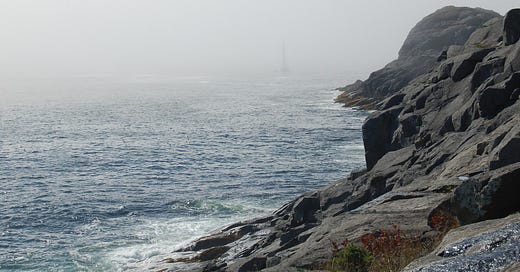




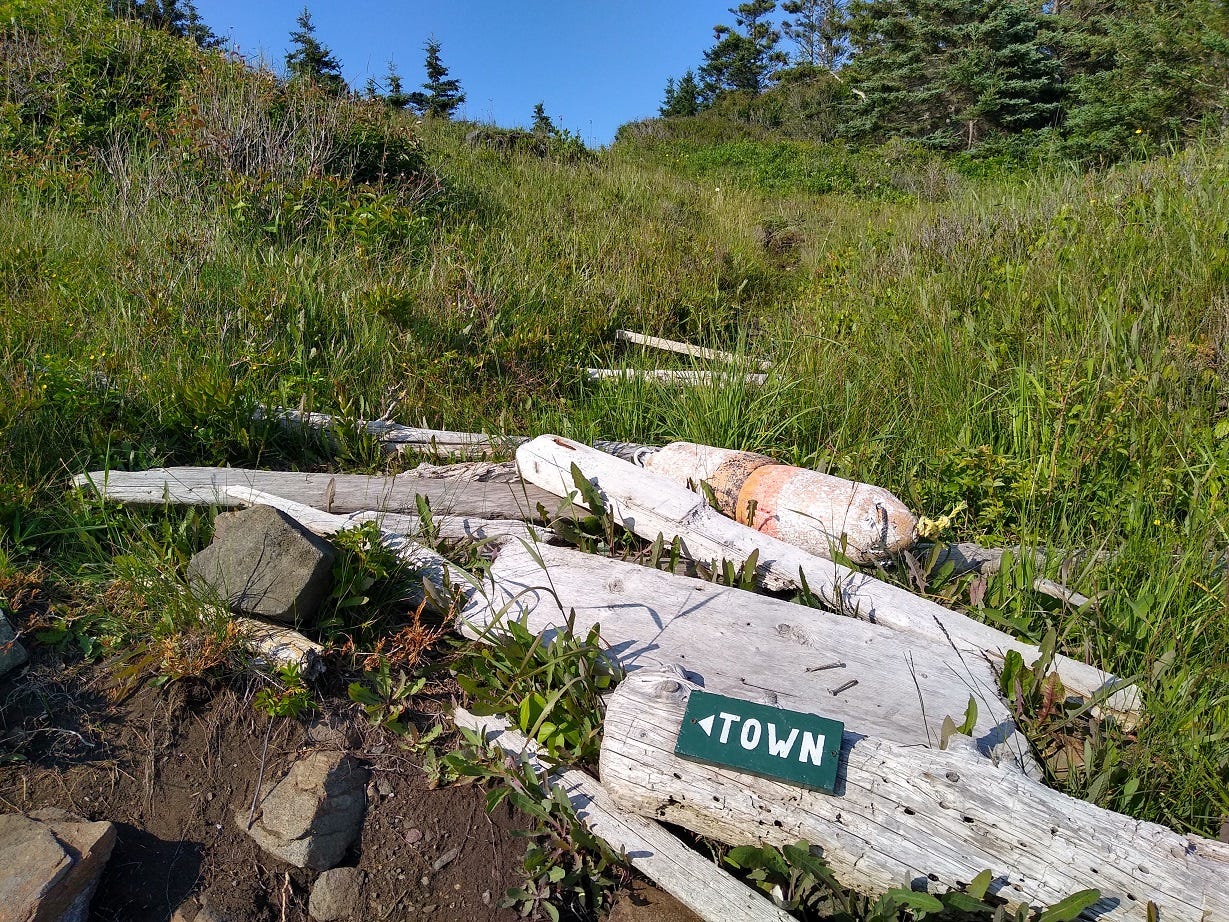
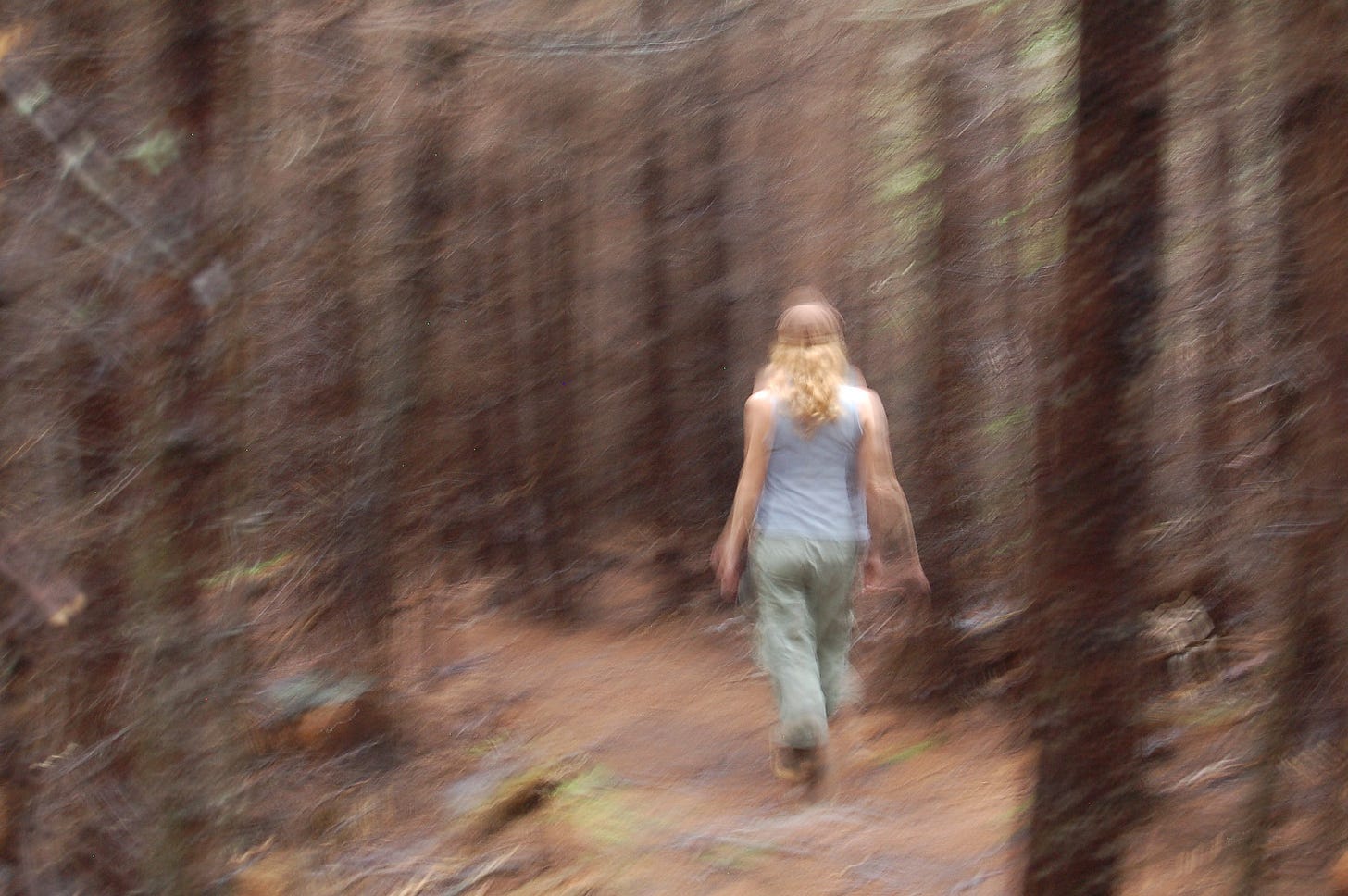
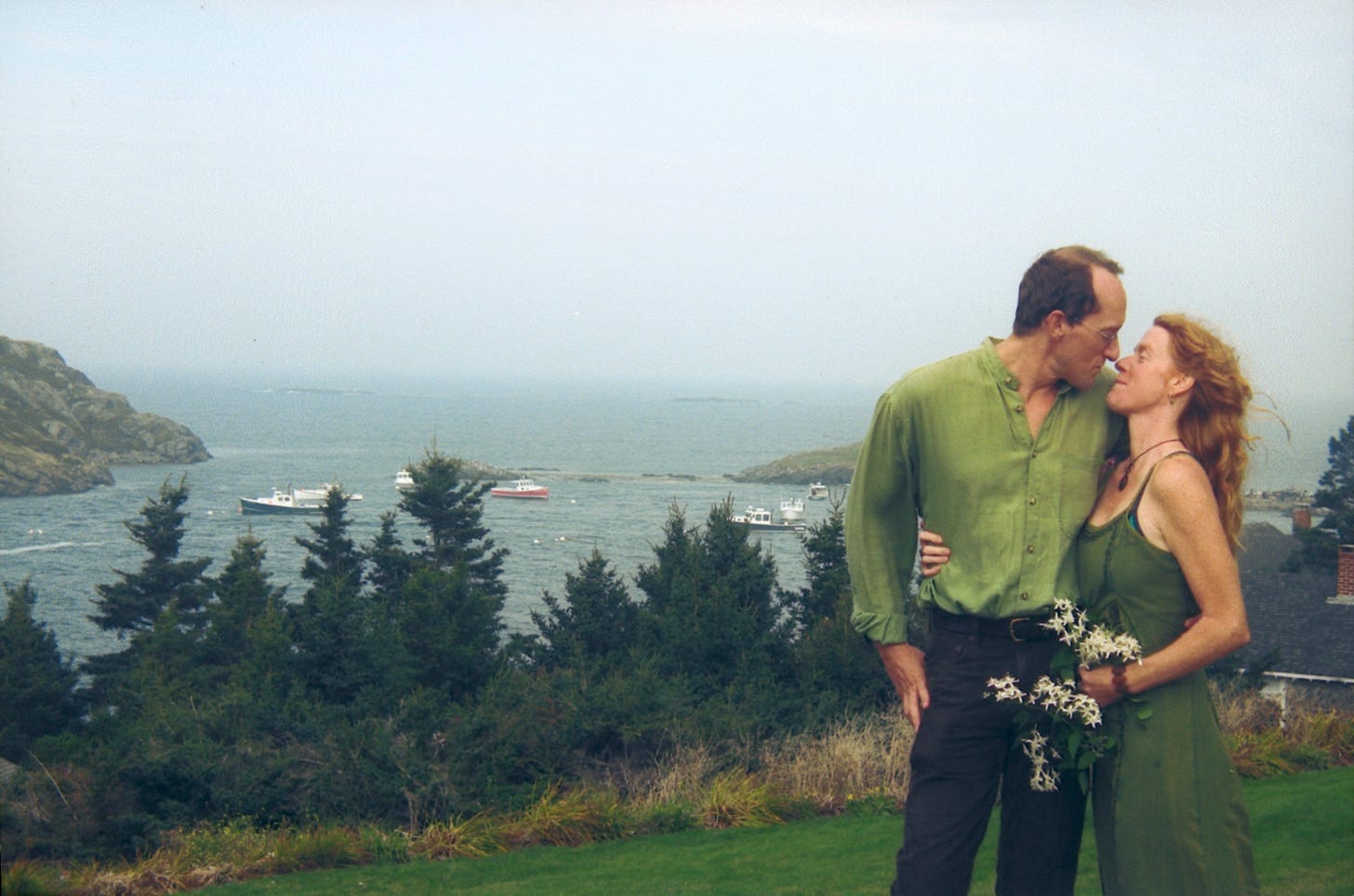

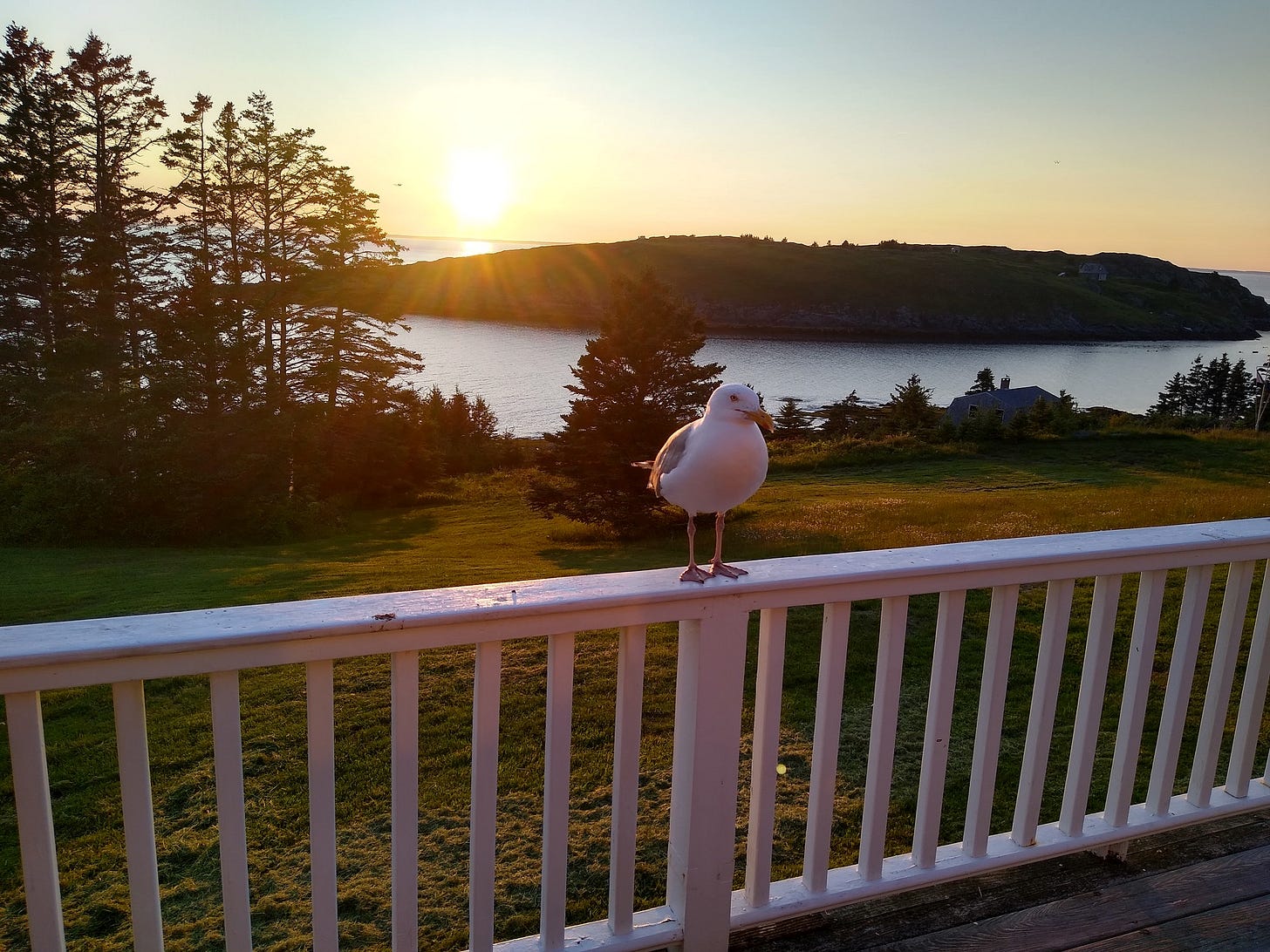
Beautifully said, thank you--I've long identified with this kind of dance of perception, but especially in the last month as I've taken on a little project to record a detail every day, often natural, and often glimpsed in the way you describe. https://annethomas.substack.com/p/detail-diary/
A lovely piece, a valuable reminder to us to be open to beauty and joy, and what better place to practice that than Monhegan. I have spent the last two weeks of September at the Trailing Yew for the fall bird migration every year for many years and feel like I saw the two of you walk over to George’s on your wedding day--or perhaps a couple just like you--happy anniversary! Hope you feel better soon and are able to return to the island together for your next anniversary.